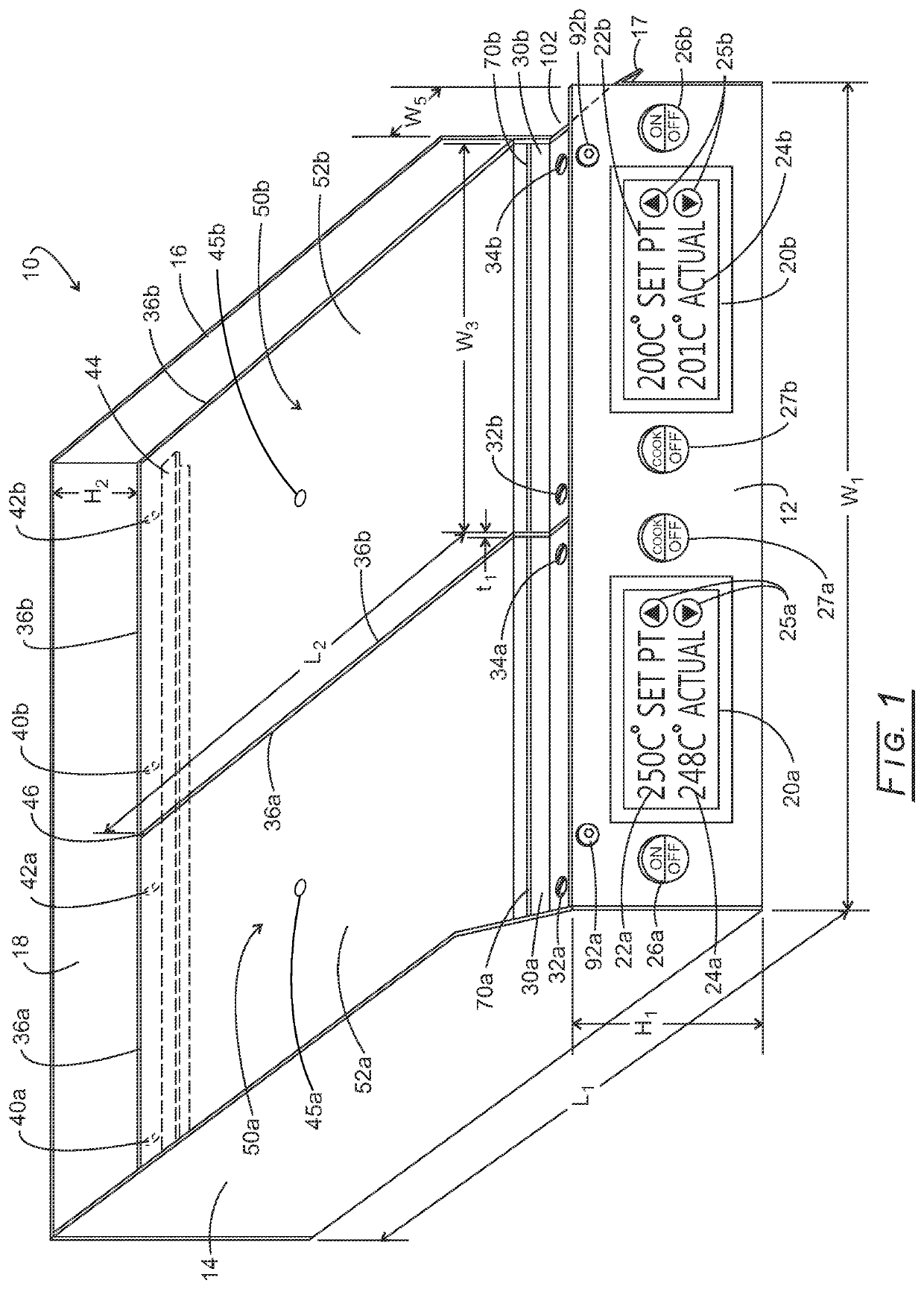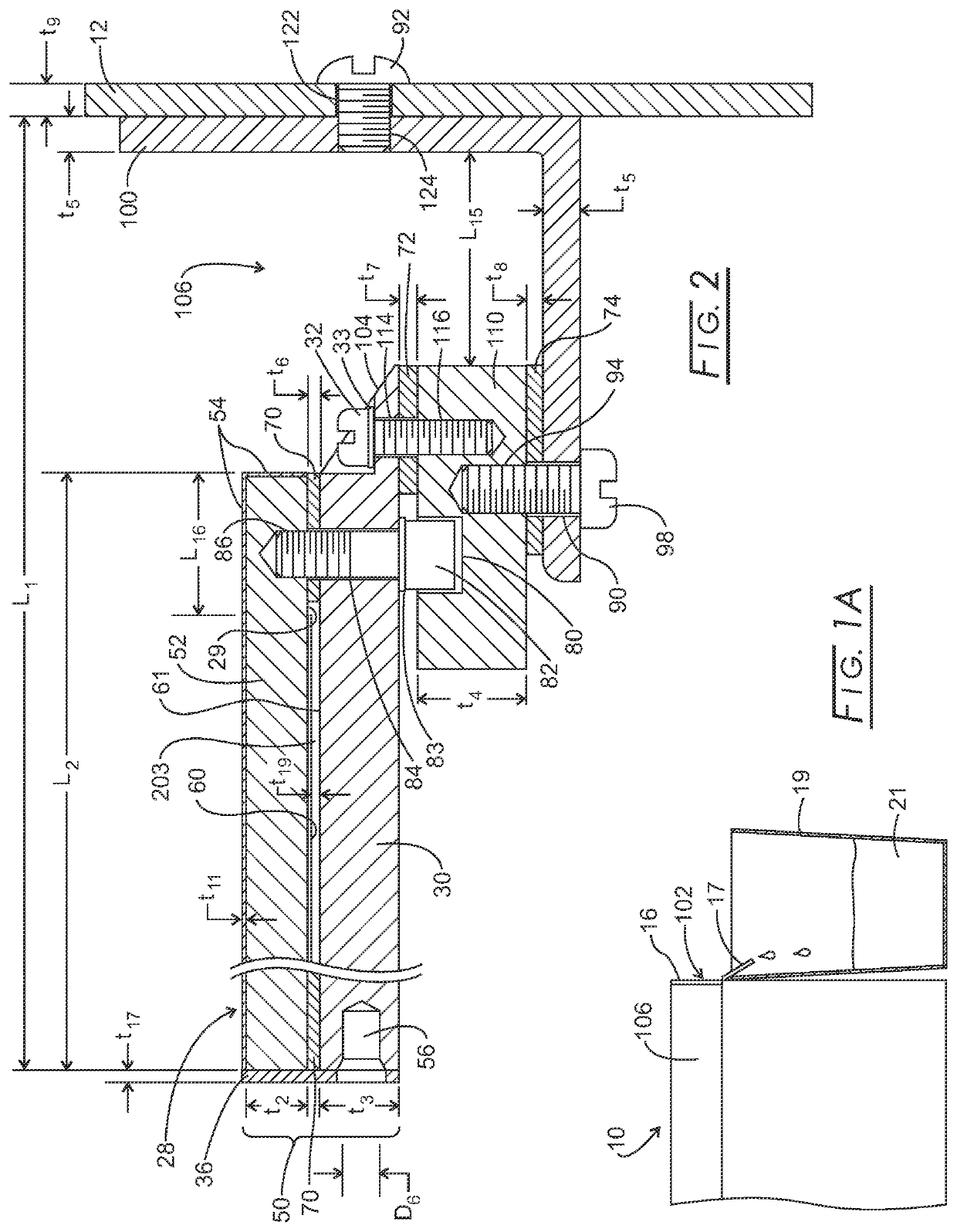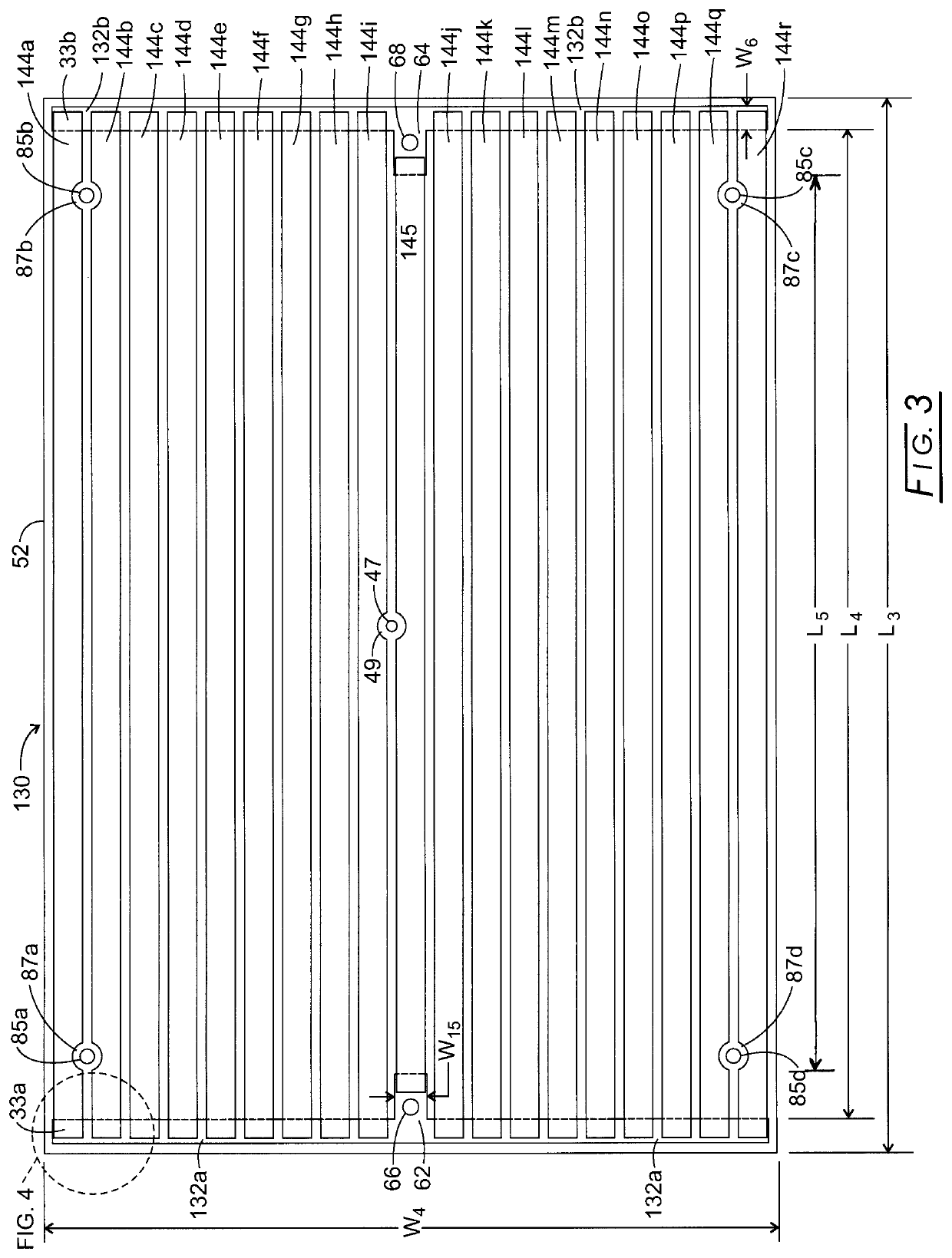Isotherm Cooking Plate Apparatus, System, and Method of Manufacture
a technology of isothermal cooking plate and cooking plate body, which is applied in the direction of ohmic-resistance heating, oven/grill, kitchen equipment, etc., can solve the problem that the estimated cost of each independently controllable and readily replaceable isothermal cooking plate assembly is less than $200, and achieves high thermal conductivity, high thermal conductivity material, and corrosion resistance.
- Summary
- Abstract
- Description
- Claims
- Application Information
AI Technical Summary
Benefits of technology
Problems solved by technology
Method used
Image
Examples
example 1
[0079]In this first example, as seen in Equation 1J, the maximum allowed thickness, tdielectric of the thick-film printed and fired first electrically insulative layer is determined based on the thermal conductivity, kdielectric of the thick-film printed and fired first electrically insulative layer and the maximum applied heat flux, {Qheater / Aheater} during the rapid heat-up of the first plate. By way of this first example, the overall dimensions of a first plate of an isothermal cooking plate assembly of a griddle system are 6.0 inches×9.0 inches. The total area of 19 thick-film printed and fired second electrically resistive heating element legs (as seen in FIG. 3) disposed on the thick-film printed and fired first electrically insulative layer that covers substantially the entire back surface of first plate is 48.0 square inches (309.6 sq. cm.). Due to the necessary spacing between second electrically resistive heating element legs, the total area of 19 thick-film printed and fi...
example 2
[0083]In this second example, as seen in Equation 1J, the maximum allowed thickness, tdielectric of the thick-film printed and fired first electrically insulative layer is determined by the thermal conductivity, kdielectric of the thick-film printed and fired first electrically insulative layer and the maximum applied heat flux, {Qheater / Aheater}. By way of this second example, the overall dimensions of a first plate of an isothermal cooking plate assembly of a griddle system are 6.0 inches×9.0 inches. The total area of 19 thick-film printed and fired second electrically resistive heating element legs (as seen in FIG. 3) disposed on the thick-film printed and fired first electrically insulative layer that covers substantially the entire back surface of first plate is 48.0 square inches (309.6 sq. cm.). Due to the necessary spacing between second electrically resistive heating element legs, the total area of 19 thick-film printed and fired second electrically resistive heating elemen...
example 3
[0088]In this third example, as seen in Equation 1J, the maximum allowed thickness, tdielectric of the thick-film printed and fired first electrically insulative layer is determined by the thermal conductivity, kdielectric of the thick-film printed and fired first electrically insulative layer and the maximum applied heat flux, {Qheater / Aheater}. By way of this third example, the overall dimensions of a first plate of an isothermal cooking plate assembly of a griddle system are 5.0 inches×6.0 inches. The total area of 19 thick-film printed and fired second electrically resistive heating element legs (as seen in FIG. 3) disposed on the thick-film printed and fired first electrically insulative layer that covers substantially the entire back surface of first plate is 24.0 square inches (154.8 sq. cm.). Due to the necessary spacing between second electrically resistive heating element legs, the total area of 19 thick-film printed and fired second electrically resistive heating element ...
PUM
| Property | Measurement | Unit |
|---|---|---|
| thickness | aaaaa | aaaaa |
| surface area | aaaaa | aaaaa |
| applied voltage | aaaaa | aaaaa |
Abstract
Description
Claims
Application Information
 Login to View More
Login to View More - R&D
- Intellectual Property
- Life Sciences
- Materials
- Tech Scout
- Unparalleled Data Quality
- Higher Quality Content
- 60% Fewer Hallucinations
Browse by: Latest US Patents, China's latest patents, Technical Efficacy Thesaurus, Application Domain, Technology Topic, Popular Technical Reports.
© 2025 PatSnap. All rights reserved.Legal|Privacy policy|Modern Slavery Act Transparency Statement|Sitemap|About US| Contact US: help@patsnap.com



